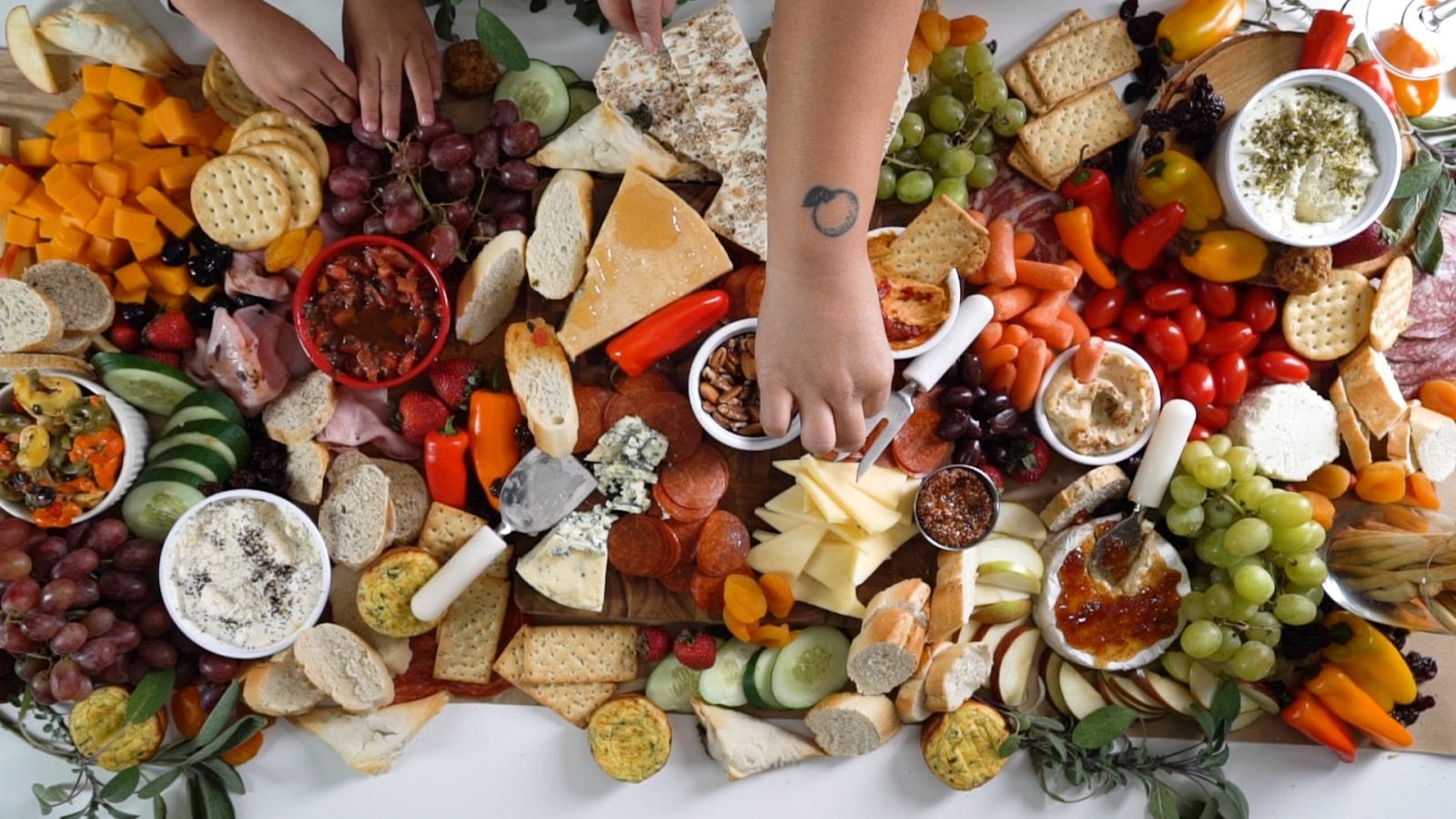How to create a healthy & delicious grazing table for the holidays

Start with fruits and veggies as the foundation.
Table of Contents
Grazing tables are a trendy way to bring people together and feed a crowd—the essentials of any holiday gathering. A grazing table is a festive spread of food that allows your guests to mingle and graze while saving time spent fussing in the kitchen. While they usually resemble an elaborate meat and cheese board, there are plenty of ways to make it a health-conscious table. The food spread can be any combination of lean meats, fresh and dried fruits, seasonal vegetables, nuts and healthy condiments. The trick? Arrange the foods in an eye-catching way that is easy for the entire party to access.
Here are some tips for creating a beautiful, health-conscious grazing table this Thanksgiving:
Estimate servings
With most holiday gatherings, it can be hard to know how much food to make. A good estimate for a grazing board is to assume guests will eat 3-5 appetizers per hour. One serving in each category is about:
- 2-3 crackers
- 2 ounces of bread
- 2-3 ounces of fruits and veggies
- 2-3 ounces of meat
- 2 ounces of dip
- 1/4 cup of nuts, dried fruits and olives
This is usually enough food, but if you have leftovers, you can freeze poultry, cranberry sauce, sweet potato dishes, some fresh fruits and vegetables and pieces of bread.
Watch how we created our ultimate grazing table:
Start with fruits & veggies as the foundation
Fruits and vegetables should be abundant on a healthy grazing table because they provide the most vibrant colors and are usually the most nutritious part of the spread. Aim for a colorful variety of cooked and fresh vegetables, as well as fresh and dried fruits. The textures should vary as much as the colors and flavors. A couple of my favorite table-worthy veggies include roasted veggies, brussels sprout skewers, and maple roasted brussels sprouts.
Add charcuterie & cheese
Charcuterie and cheese are grazing table staples, but you can also include leaner proteins, like smoked salmon or roasted tempeh or tofu for plant-based options. A spread should also include some healthy fats, like olives, roasted nuts and nutrient-dense dips. Toasted pumpkin seed dip is a great spread for roasted or fresh veggies.
Stick with neutrals
While the decorations are almost as important as the food, they don’t need to be complicated. Use a variety of neutral-colored plates, bowls, serving dishes, platters and cutting boards for the foods. Or, use cake stands or tiered stands to add height to the table.
Make it accessible
Guests will be lingering around the table so fill multiple bowls and plates with each item and scatter them evenly so people can access the same foods at different places. Create signs to label any food items that need an explanation, or have allergens that must be called out.
Fill in empty spaces
Fill in sparse areas between foods with colorful fruit decorations, such as bunches of grapes, figs, strawberries, slices of grapefruit or dried apricots. Mini decorative pumpkins or gourds make a great Thanksgiving decoration, whole fresh herbs like rosemary or sage work great for winter festivities.
Swap classic dishes for healthier options
If you’re using a grazing table as a new way to serve traditional Thanksgiving foods, there are a few swaps you can make to keep it delicious, beautiful and nutritious:
- Cranberry sauce: Skip the can that’s pre-loaded with refined sugar and make one that’s sweetened with fruit juice. This will cut down on the amount of sugar and increase the fiber content. Fill a few small, decorative ramekins and place them in various places around the table.
- Sweet potato casserole: Try baked sweet potatoes topped with a drizzle of maple syrup and chopped pecans, rather than the classic marshmallow-topped dessert-like side dish. Cut potatoes into fourths and place on small plates around the table.
- Mashed potatoes: Replace half of the potatoes with cauliflower. Greek yogurt can also be used in place of sour cream to reduce fat and boost protein content. Serve in bowls.





































